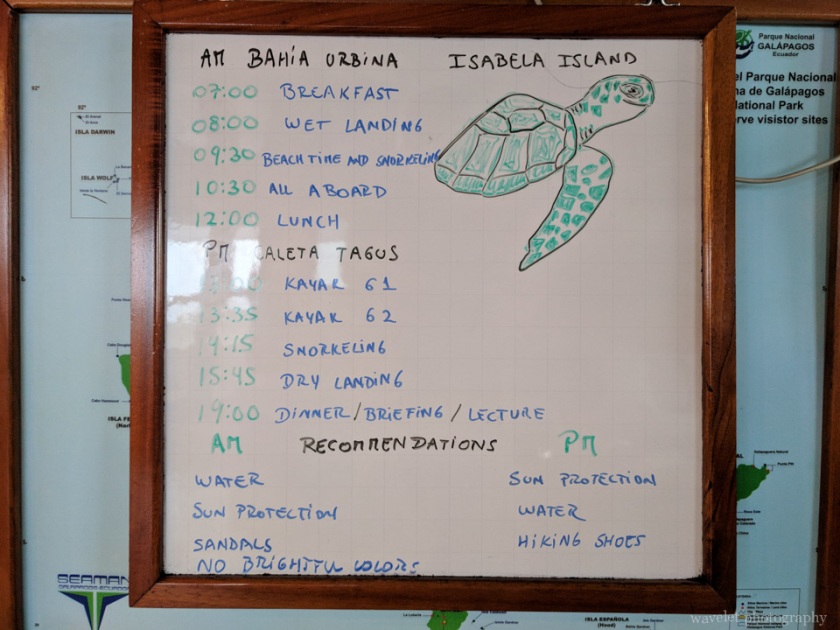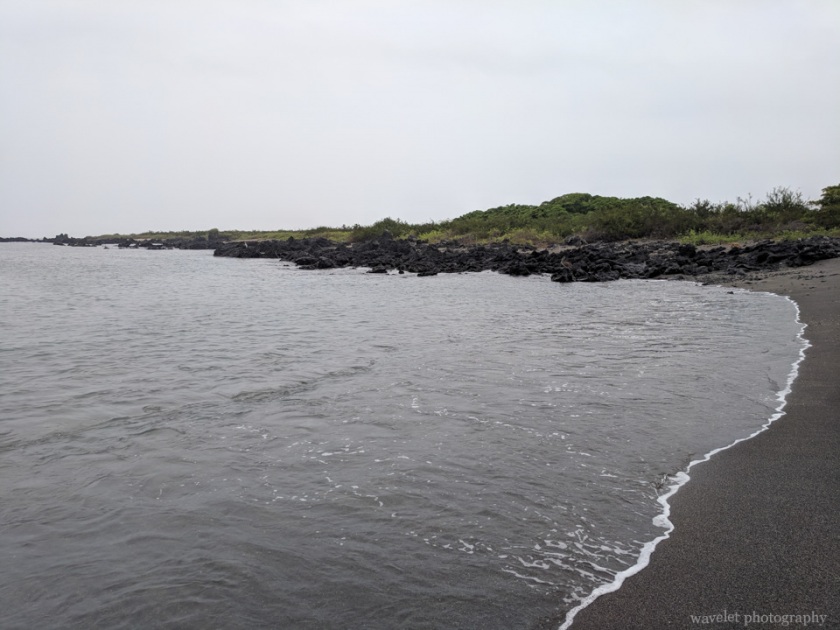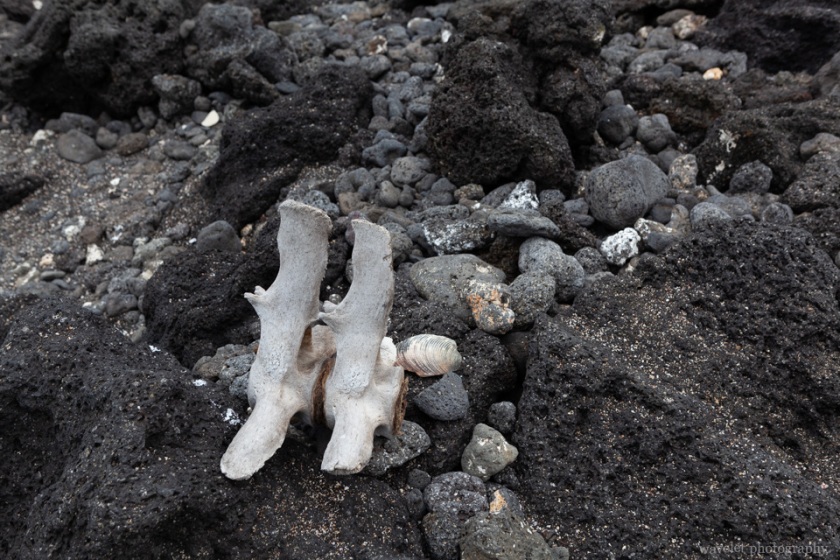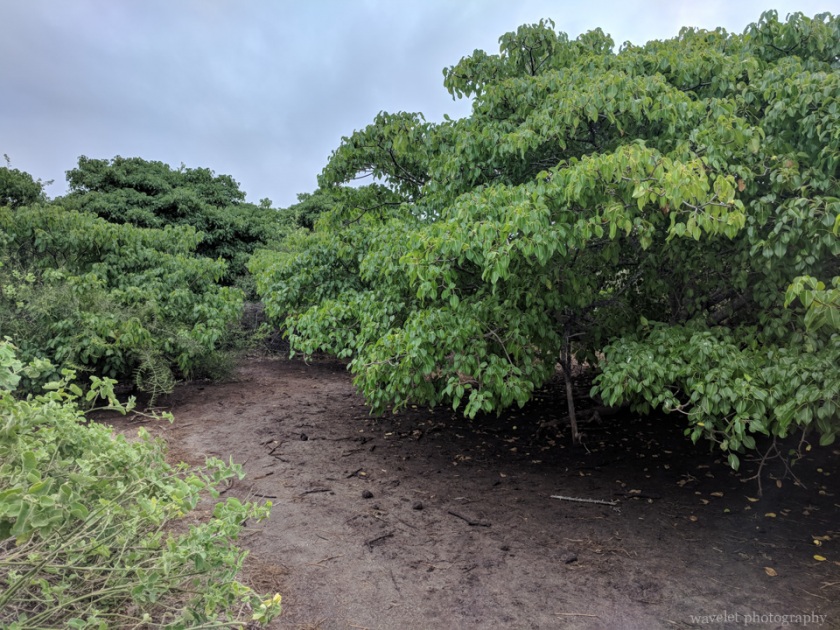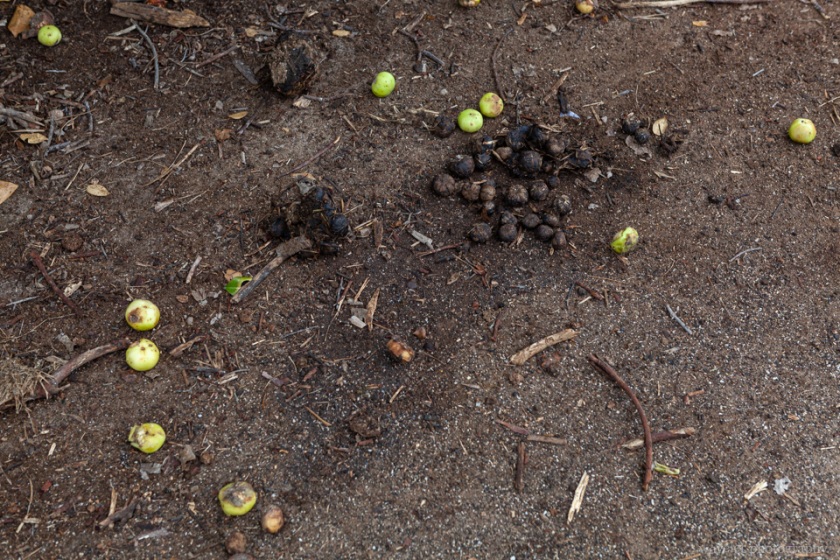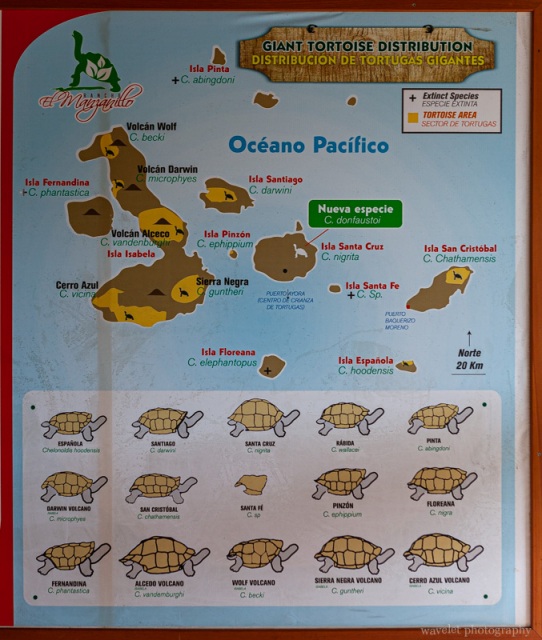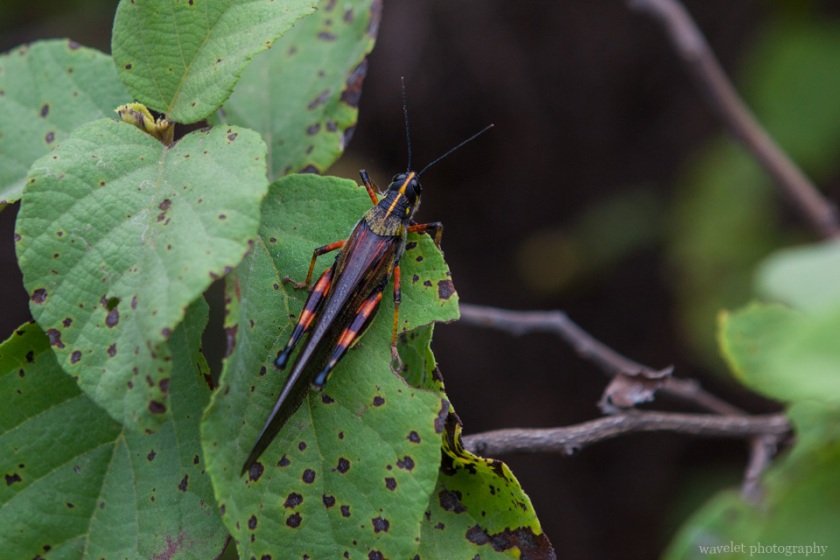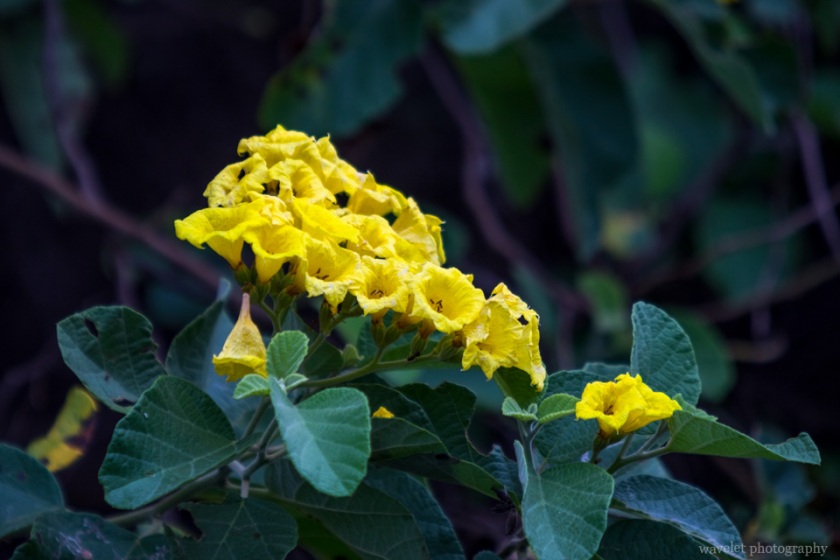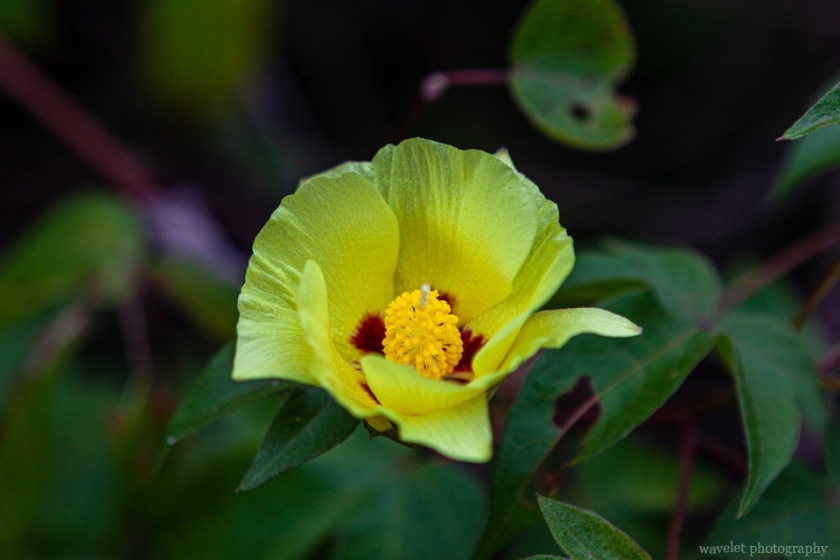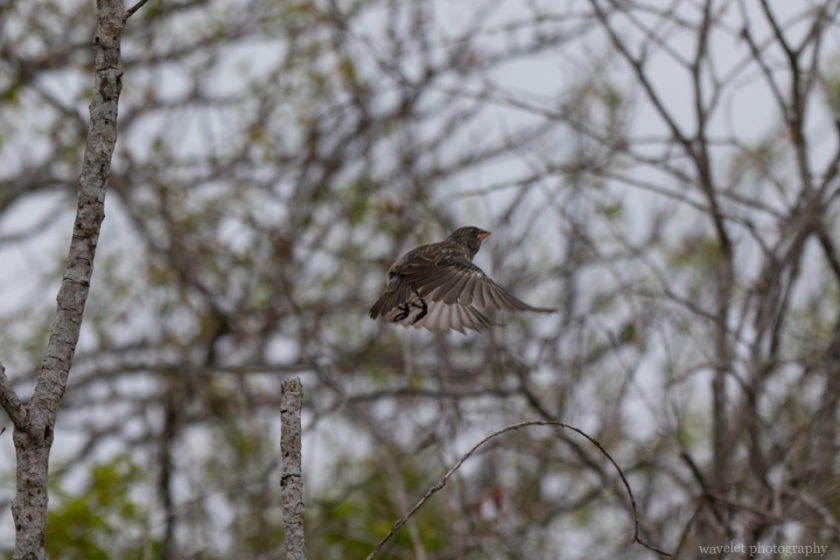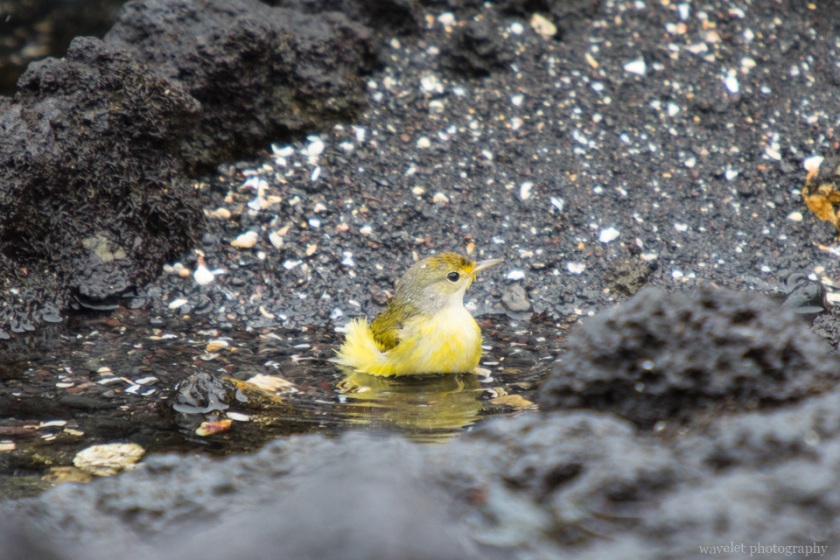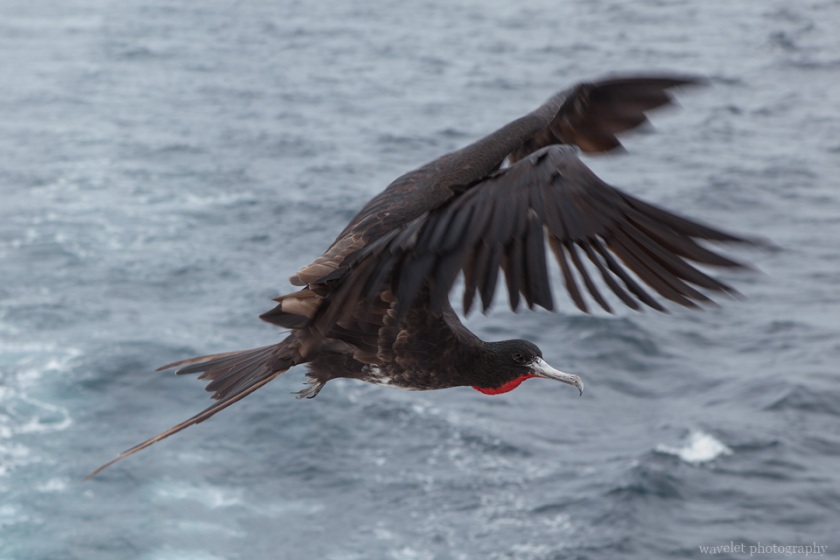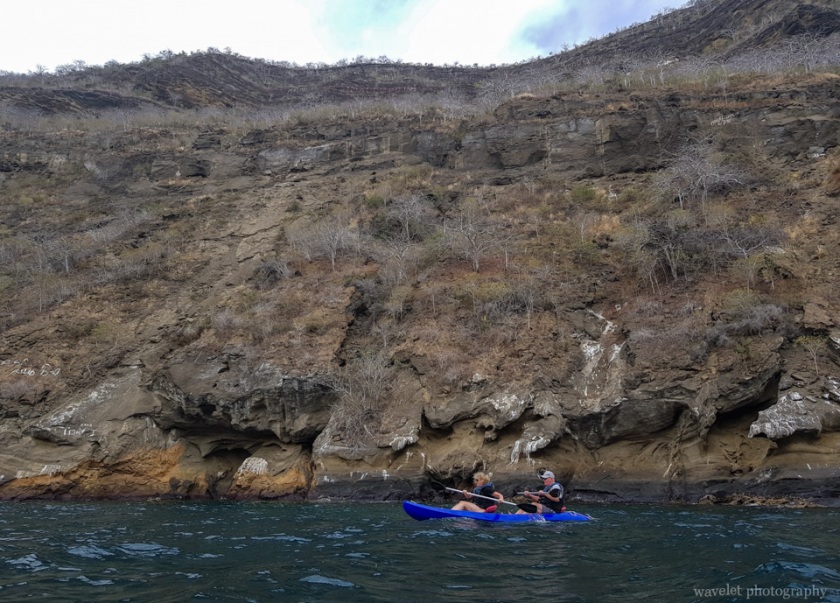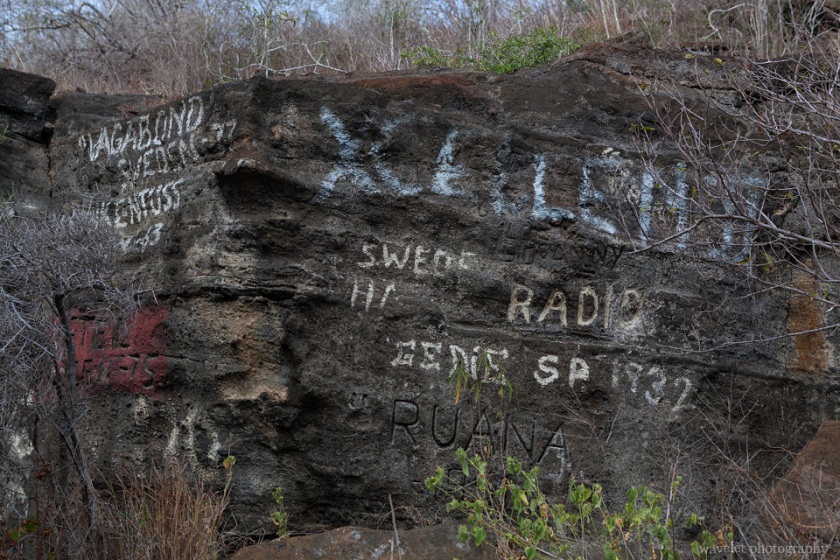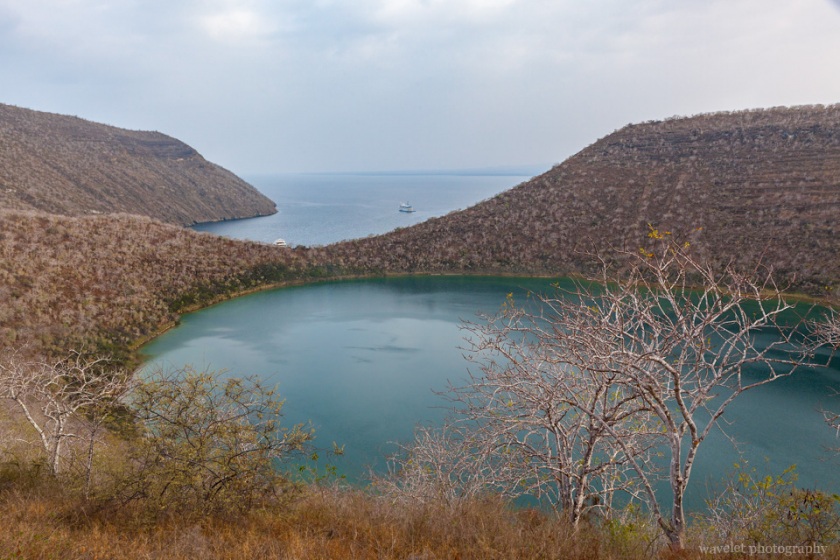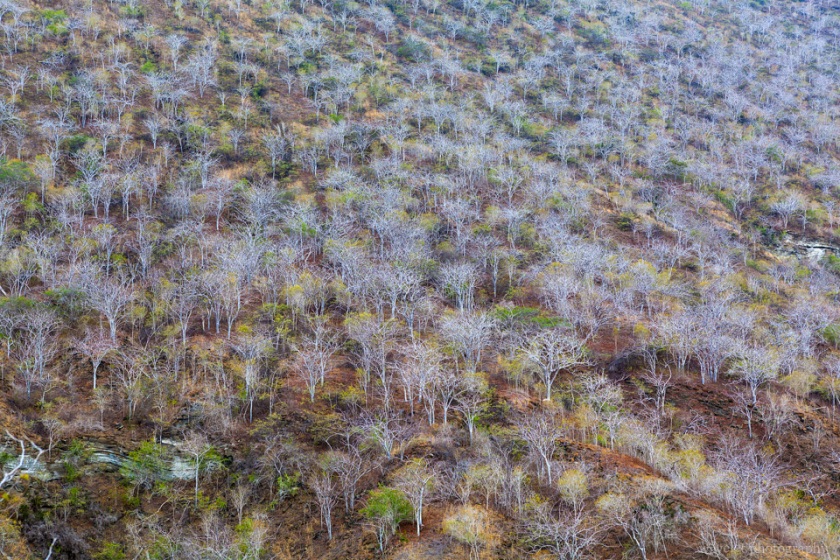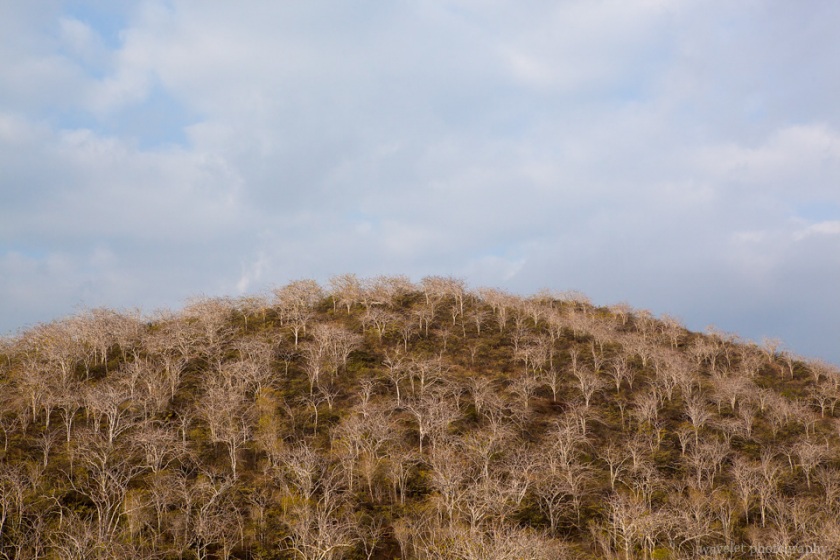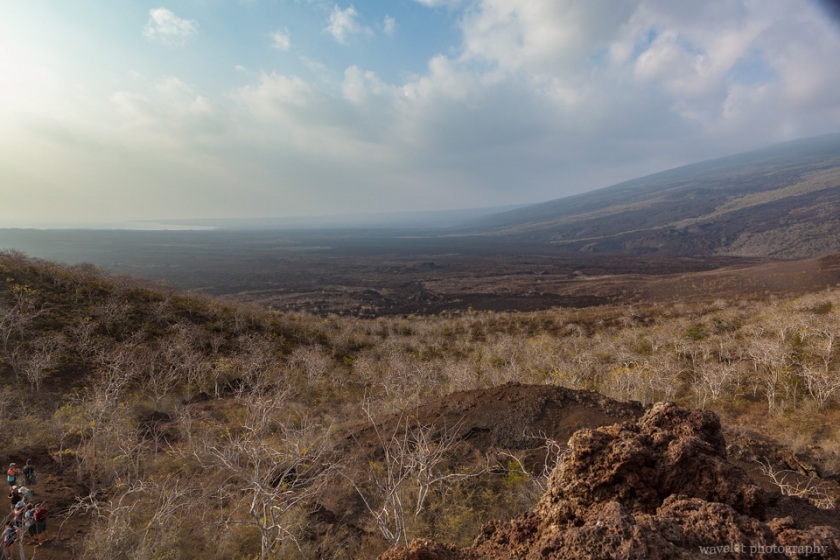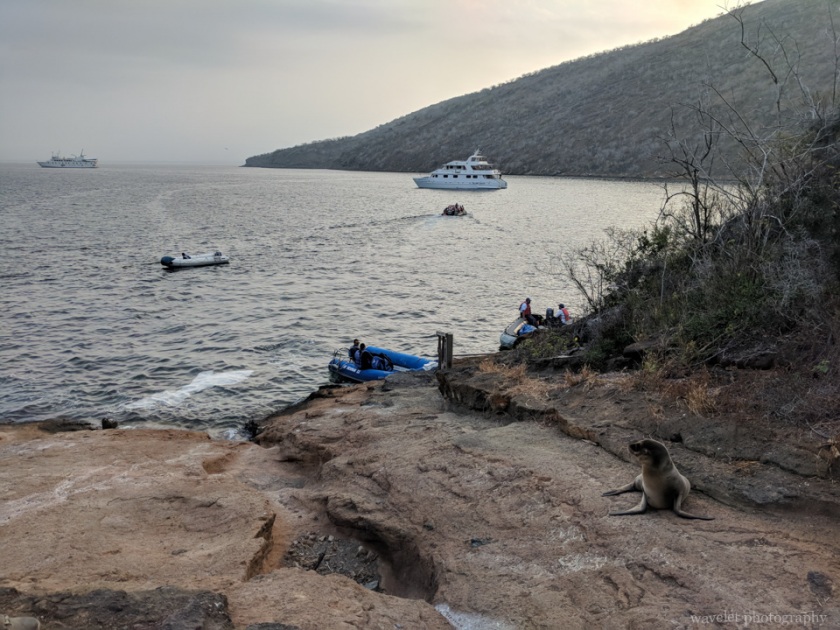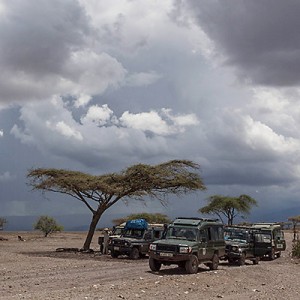2018.7.1
It is only about 10 nautical miles to cross the channel between the two islands from Punta Mangle on Fernandina Island to Bahía Urbina on Isabela Island. Our yacht arrived in the late afternoon and was anchored in the sea near Isabela Island.
The next morning’s landing site was Urbina Bay, a half-moon shaped beach. This area was below sea level until 1954, when crustal activity caused the surface to rise five meters overnight, pushing the coastline outward by more than a thousand meters. the beach at Urbina Bay is dark black, and many shells and rounded stones can be seen, showing that it has not been exposed to the water for long. The geological activities on Isabela Island are still very active.
The half-moon shaped beach is surrounded by bushes and we followed the trail deeper into the trees. Throughout the Galapagos Islands, Bahía Urbina is the only place where giant tortoises are still lived naturally, while elsewhere they are mostly affected by migrations and invasive species. On the paths we walked, we could see tracks of giant tortoises and their excrement left behind. The small apples that they eat contain substances that are toxic to humans, but they are not only harmless to the turtles, they also help them digest other foods.
Not long into the walk, we saw an giant tortoise coming head-on toward us. Our group immediately stepped to the side to give way to the tortoise. The giant tortoise did not seem to be bothered by our presence, still walking unhurriedly in front of us, and occasionally looked up at us, as if reviewing the team to salute it.
The giant tortoises walk slowly and don’t work very fall. Those living in different parts of the archipelago have evolved independently and have developed different body forms due to environmental differences. In arid areas, where there is a lack of vegetation on the ground, tortoises must hold their heads up to eat leaves from cacti or shrubs. The heavy shell of the tortoise becomes a burden and needs to make way for the raised neck. Over time, the front of the back of the tortoise has evolved into a saddle-shaped bulge. The tortoises that live near Bahía Urbina apparently do not require this much effort, and their shells are still relatively flat and round. The following picture is displayed on the wall of the tortoise farm we visited on our first day. It depicts the shape of tortoises’ shell in different parts of the Galapagos Islands. This is one of the most important pieces of evidence to support the theory of natural evolution.
We followed the trail for about one and half miles to the top of the hill and back, seeing a variety of plants and animals unique to the Galapagos Islands along the way. Interestingly, the majority of the wildflowers in the archipelago are yellow, again as a result of natural selection. There is only one type of bee on the Galapagos Islands, the Galapagos carpenter bee, and they are only interested in yellow flowers, so the flowers on the islands do not have to be colorful, and only plants with yellow flowers are survived over generations.
On the way back, we saw a land iguana lying on the side of the road. There are three species of land iguanas in the Galápagos Islands, besides the Galápagos land iguana we saw, the land iguana that lives on Santa Fe Island, and the pink land iguana that was found after 1986 at Volcán Wolf, north of Isabela Island. The Galapagos land iguana has a yellowish body and a more prominent mouth than the marine iguana, and feeds mainly on cactus and leaves. According to recent studies, the land iguana and the marine iguana separated about 4.5 million years ago. Since humans moved into the islands, invasive species, such as feral cats and dogs, brought by humans have posed a great threat to the survival of the land iguana, and the naturally growing land iguana on some islands has become extinct.
When people talk about the Galapagos Islands, they often think of marine iguanas and giant tortoises. The unique physical appearance of these animals did provide strong evidence for Darwin’s theory of natural selection, but it was the unimpressive finches that really inspired Darwin’s discovery. It is said that although Darwin collected many specimens of finches in the Galapagos Islands, he himself did not pay much attention to them and did not even record them in his diary. It was not until after his return to England that a painter named John Gould depicted and classified these specimens as belonging to different species. It was only then that Darwin began to organize these finch specimens, tracing the locations where they were collected, which eventually inspired his theory of the evolution by natural selection.
At noon, the boat left Bahía Urbina for Caleta Tagus. There were several frigatebirds flying with the boat with the help of the wind. Frigate birds are large, and the males have red throat sacs on their necks that can rise to a balloon-like, reddish color during breeding. Now that the season is not right, the red throat is just deflated and attached to the frigatebird’s neck.
Caleta Tagus is a bay with calm winds and waves. The first activity after lunch is kayaking.
Caleta Tagus is located at the foot of Darwin Volcano. Because of the calm waters, this was once a regular resting place for pirate ships and whaling boats. The place where we landed not only has stone steps carved out of the rocky shore, but also several sections of wooden handrails. On the cliff face by the “port”, the captains carved the year and their boats’ name on the rock, some can be dated to as early as 1800. As our guide Marco said, the Galapagos Islands National Park was established in 1959, before that, the carvings on the rocks are history; after that, they are graffiti.
We walked up the trail and then along the ridge of Lake Darwin Crater again. In addition to Darwin Volcano, there are actually several smaller craters around Caleta Tagus. As we walked up the ridge and looked back, we could overlook the bay and Lake Darwin separated by the narrow crater ridge. Lake Darwin is twice as salty as sea water and there is little life in the lake. Nearby are a few Palo Santo trees, a unique sight against the turquoise blue water of the lake.
The Palo Santo tree grows widely in Central and South America and is known as a sacred tree. the wood of the Palo Santo tree contains natural oils and aromas and was often used for rituals in the past and is now also used as incense for its refreshing effect. the slopes around Caleta Tagus are covered with Palo Santo trees, the top branches of which resemble an umbrella. They are especially beautiful as they as covered the entire hillside.
The end of the trail brought us to the western slope of Darwin Volcano and a large area of volcanic land. It was quite hazy that late afternoon. We couldn’t really see it from a distance.
It was dark when we were back at the boarding area. There were several sea lions on the rocks by the beach, and one of the baby sea lions was staying in the middle of the steps. This was the third day of our trip and we had seen all the animals we were supposed to see. Will there be more surprises to come?
